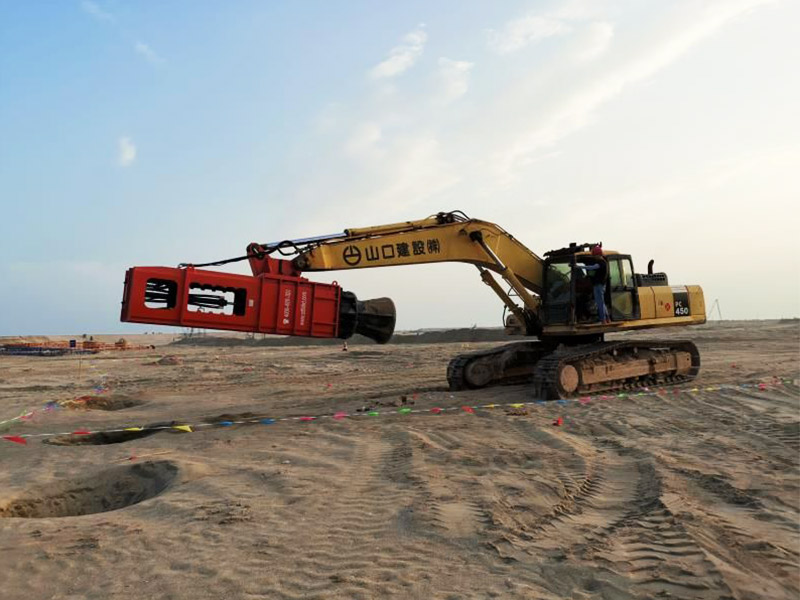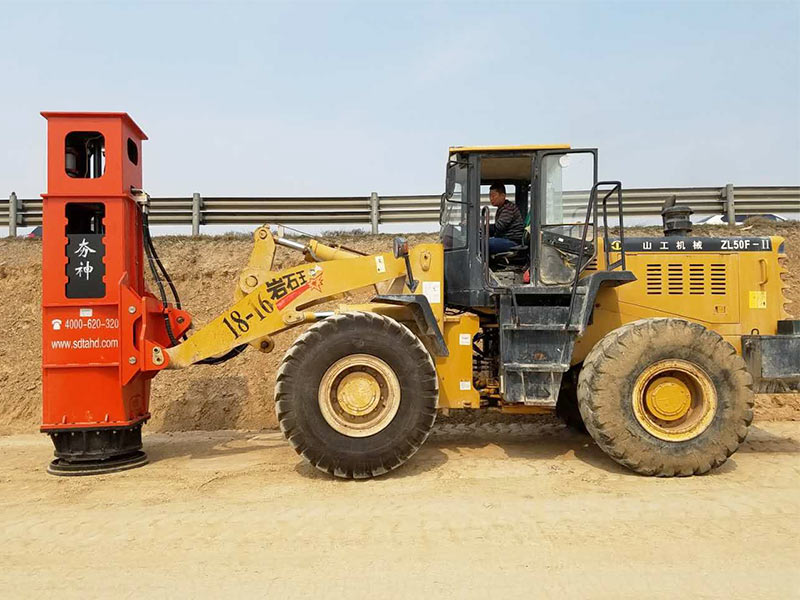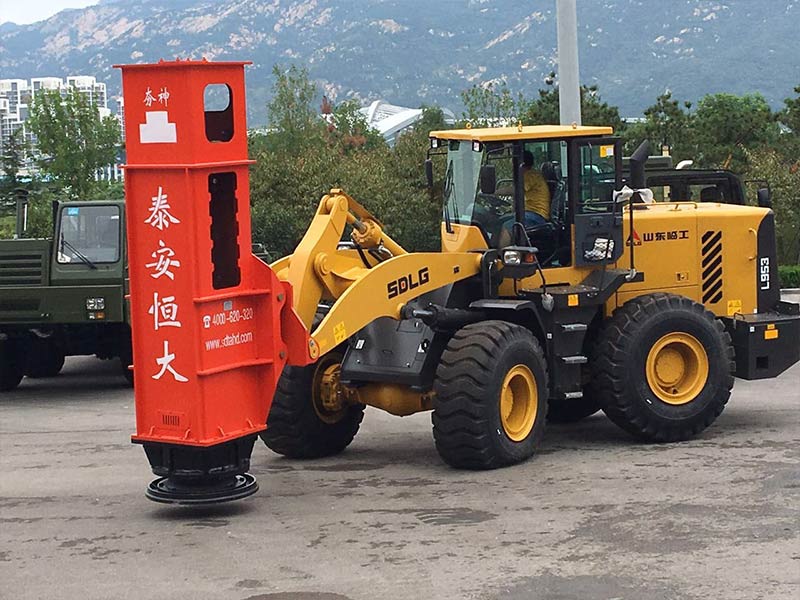update time:2022-09-15 09:31:25
Views:1352次
Typical areas of application could include projects such as low-rise structures like housing and sch...
Typical areas of application could include projects such as low-rise structures like housing and schools, embankments, roads and pavement areas. Having the Rapid Impact Compactor mounted on a tracked machine gives it the versatility to move about in narrow and limited height spaces, such as within existing warehouses. With regard to its mobility, the RIC is able to be transported as a single unit, with the impact foot removed and the front end lowered horizontally on a flat-bed trailer. The machine can be ready to work just a few minutes after off-loading. If road restrictions apply, the unit can be easily split into two loads with the excavator travelling separately from the hammer. Re-assembly is achieved in less than two hours.

RIC typically employs a 7 tonne weight dropped repeatedly through 1.2 m onto a 1.5 m diameter steel articulated compaction foot. Whilst the energy per blow is not large (typically 8.4t.m), the equipment permits a large number of impacts to be applied at a rate of about 40 blows per minute. The operator monitors and can record the number of impacts, the total energy input applied, the foot penetration per blow and the cumulative penetration. When a specified parameter is reached, for example, foot penetration or set per blow, the equipment is moved to the next treatment/tamping point. As the foot remains in contact with the ground, the energy is applied more efficiently in compacting the ground than in conventional drop weight dynamic compaction where the weight may fall on an irregular surface in such a way that much of the energy is dissipated in deforming the irregularities of the ground. Both field trials and laboratory simulations of RIC have shown that the manner in which the ground responds to treatment is a “top-down” process, compared to DC which is a “bottom-up” process. The first few blows in rapid impact compaction create a dense plug of soil immediately beneath the compaction foot. Further blows advance this plug deeper, which compacts soil in a deeper layer. This process progresses until little further penetration of the compaction foot can be achieved with increasing blows. The effect of the compaction process is confined largely to the ground vertically below the compaction point and treatment is therefore carried out on a closely spaced square or triangular pattern or sequenced on an arc about the centre of rotation of the base machine for the RIC equipment. Additional passes are typically offset from the primary pass to ensure effective treatment coverage. The carrier vehicle is typically a hydraulic excavator.

The RIC employs an on-board computer to control impact set termination criteria, and to record critical data. So the machine is accurately controlled from the excavator cab, and the degree of compaction is electronically monitored. The monitor can be set to halt impacting on a footprint once the design set is reached. Thus, wasting energy is avoided, and performance and production rates can be improved. The data stored in the monitor can be downloaded to a PC and analysed, evaluated and printed.

When compacting a sloped area is it best to roll up and down a slope or across it?
The compaction effect of the Rapid Impact Compactor is chara...
What is compaction by pounding?
Rapid Impact Compaction provides a technically sound and eco...